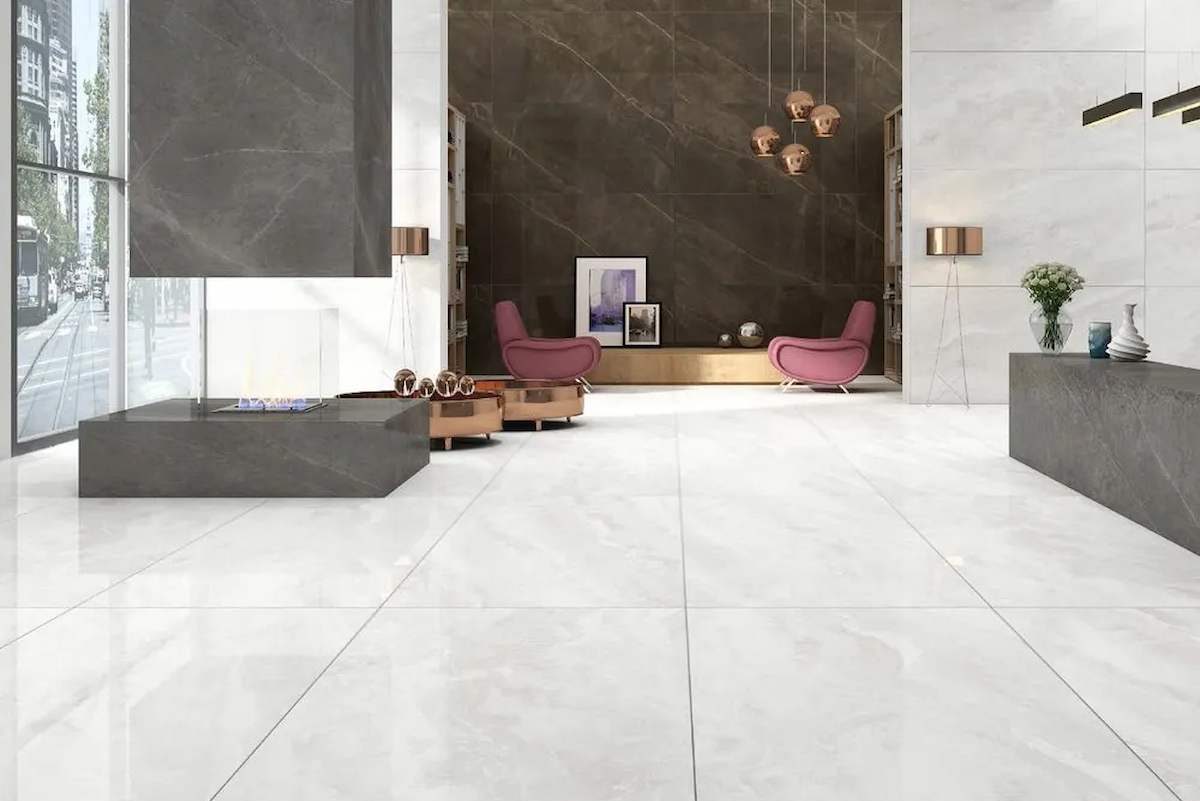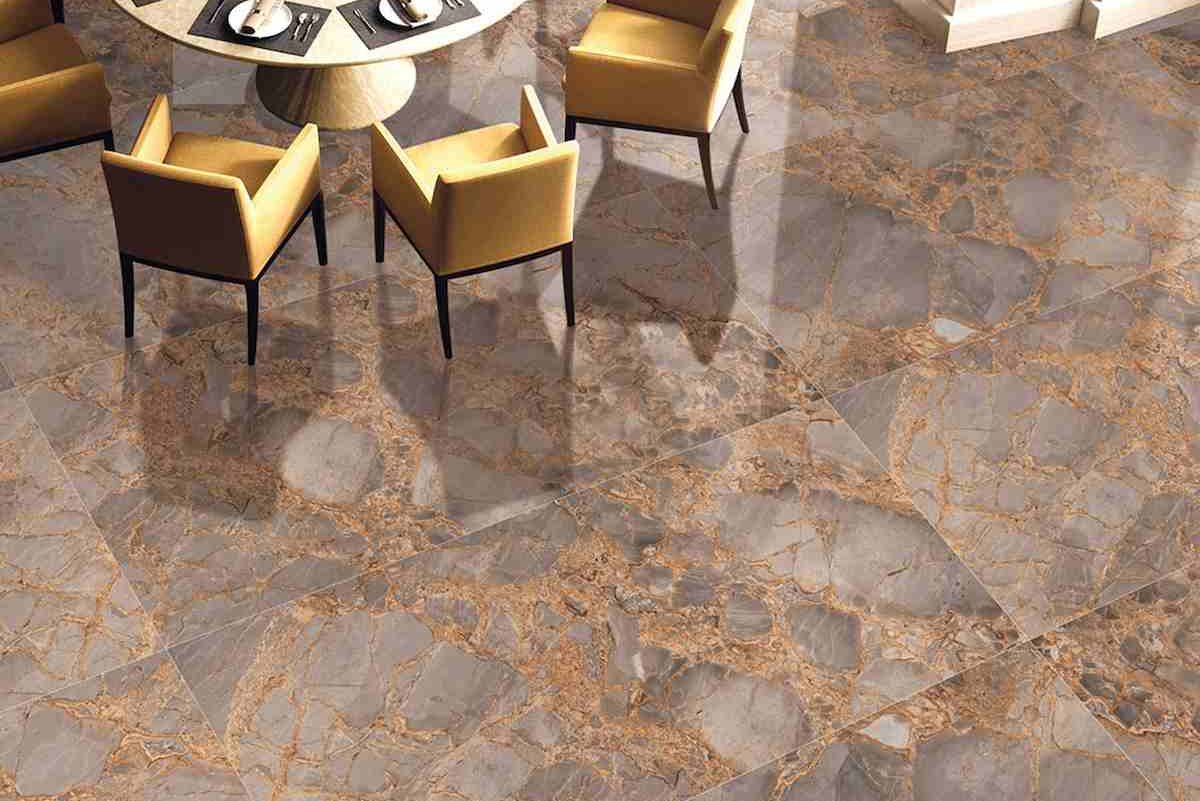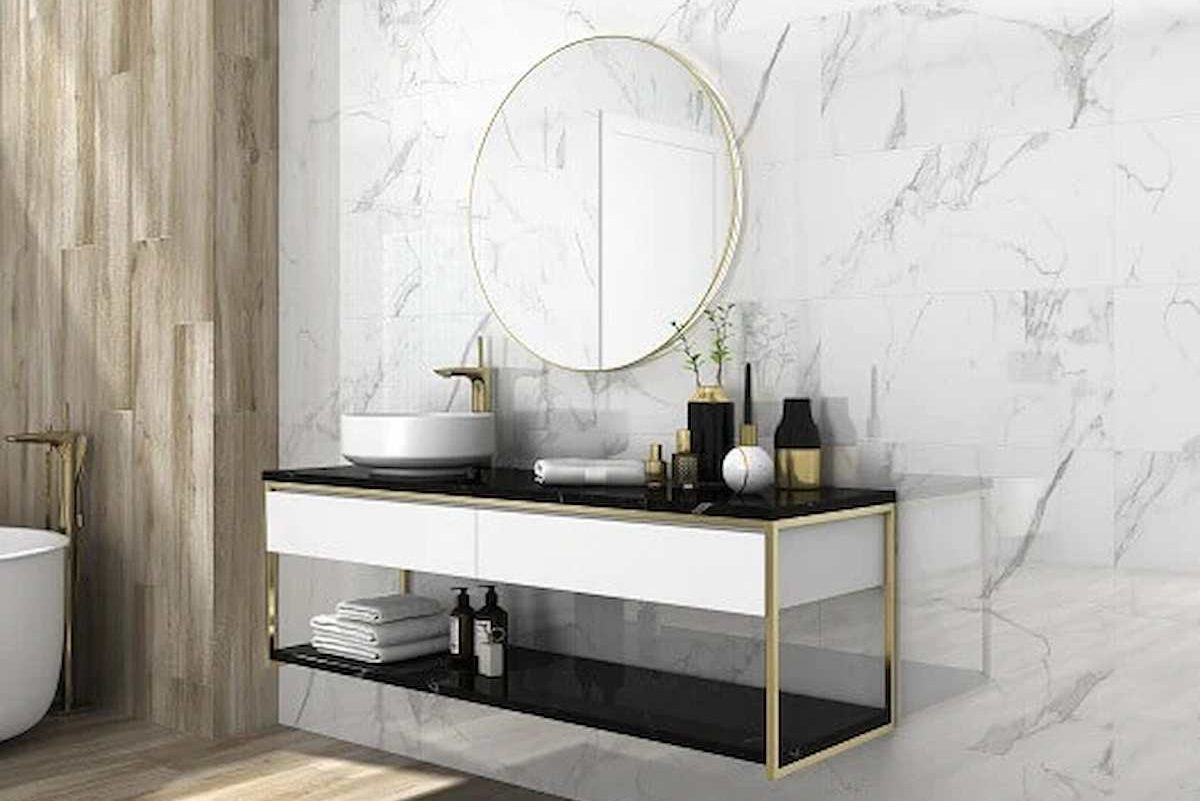The choice of whether to choose ceramic tiles, which are more affordable vs natural marble tiles, which will never lose its luster or rich appearance, is an important one issue and homeowners should know what to choose when they are in two minds about marble and ceramic tiles.
When deciding between marble and ceramic tiles, which should you pick?
Marble or ceramic tiles: which is better? – There is a dizzying array of vitrified tiles and marble to choose from when redoing the flooring in your home or workplace, making it challenging to settle on a single design.
A major decision must be made between the classic and luxurious aesthetic of genuine marble and the more affordable and practical option of ceramic tiles. Our goal is to help you get a handle on the fundamental distinctions between the two materials.
Properties
Which is better: ceramic or marble tiles?
Rock is extracted from the ground and is composed of calcite, dolomite, and limestone. Tiles cut from marble, a thick material with a high water absorption rate and a visually interesting pattern of veining and swirls on its surface, are commonly employed in construction as flooring and wall cladding.

Ceramic tiles are made and created from a mixture of clay and other minerals, including silica, quartz, and feldspar, that have been fired at very high temperatures.
This procedure produces a uniformly glassy substrate throughout the tile, which is responsible for its signature silky finish. Due to the external coating that is frequently used, these tiles have a low water absorption rate and are durable.
There are many different marble and ceramic finishes available for tiles.
Blocks, slabs, or tiles of marble can be utilized as flooring because it is a special substance with its own personality. There are numerous natural colors of marbles, including green, brown, white, black, grey, and a number of others. Glossy finishes can be attained with polished marble, while honed and sand marble offer more matte, earthy options.
Ceramic tiles are manufactured and available in a wide range of styles, hues, patterns, and finishes. Tiles can be created to seem like other materials, like wood, bamboo, and even marble.

Vitrified tiles can be used indoors or out and come in a variety of textures and styles, including glossy, matte, and anti-skid.
Installation: Ceramic vs. Marble Tiles
In comparison to other materials, installing marble requires more time and effort. Marble is rarely found in a shippable state in most parts of India. After placing an order, we will cut and polish the marble to your specifications. In addition to the time needed actually to lay the marble flooring, there is also the time needed to polish and finish it.
It takes around 1.5 days to lay flooring in a standard-sized room using ceramic tiles, which may be purchased in a ready-to-ship condition from retailers.
Because of the quick curing time of these tiles, they can be put to use almost immediately after installation. Because of their pre-polished state, no additional polishing is needed in the field.
Because they are so easy to cut by hand, ceramic tiles can be put in an infinite number of patterns and combinations to fit your particular tastes and requirements. The typical thickness of a tile is only 10–12 mm, which will drastically cut down on the depth of your floor.

Upkeep: Ceramic vs. Marble Tiles
Despite being a naturally occurring material, marble is very reactive. Stains can be caused by the reaction of marble with even mild acids, such as those found in vinegar, mustard, citrus juice, and other typical kitchen and bathroom staples.
You should clean up any spills if you have marble floors. Mild detergent and water are fine to use on the floor, but be sure to dry it off right after cleaning.
Periodic sealing of marble floors is also necessary for water resistance. Maintaining your marble floors with regular polishing may make them look like new.
Ceramic tiles are low-maintenance and simple to clean. These tiles are stain-proof since they don’t soak up much water and won’t warp if dropped. A simple dusting and wiping down once a week will keep your tiles looking like new. Tiles come in conventional sizes, so it’s easy to find a replacement for a damaged one.
Longevity: Marble vs. Ceramic Tiles
Ceramic tiles withstand constant foot traffic for years with little wear and tear. These tiles are resistant to fading and scratches, so they won’t need replacing for at least ten to fifteen years if you take care of them properly. When handled roughly, though, ceramic tiles can easily crack.

Despite being more durable than other flooring options, marble takes on a yellowish hue after some time. Marble flooring, if properly cared for, can last for about 25 years with regular maintenance.
Comparing the Price of Ceramic and Marble Tiles
Being a natural resource, marble is more expensive than man-made materials like vitrified tiles. Flooring costs might differ from one location to another and from one grade to another because of the uniqueness of color, material, etc.
Ceramic tile flooring prices vary widely depending on the style and manufacturer selected. However, because they are man-made, these tiles are less expensive than marble.
In terms of aesthetics, how do ceramic tiles compare to marble tiles?
Marble floors have always been a sign of wealth and prestige. Unique in appearance, this flooring is favored by palaces all over the world. The polished stone gives a lustrous sheen and a lovely, natural appearance.
Ceramic tiles come in a wide variety of attractive colors and textures, but they can’t compare to the natural beauty of wood or stone. Ceramic tiles can be used to produce a faux-marble impression; however, the grout lines between them are more obvious than they would be in genuine marble.
In what situations are ceramic tiles preferable to marble tiles?
Marble tiles are ideal for use in interior spaces such as hallways, living rooms, and bedrooms. Some people may find that using polished marble in the bathroom is too dangerous.
Marble is impractical for kitchens due to its susceptibility to water absorption and staining. Because of its susceptibility to weathering and pollution, marble is not a viable choice for outdoor use.
Ceramic tiles are versatile enough to be used indoors, outdoors, and even in high-foot-traffic locations. Due to their slip-resistant surfaces, ceramic tiles are versatile and can be used in the kitchen and bathroom.
Conclusion
Consider your budget, design preferences, available space, tile needs, installation location, and tile’s intended use when deciding between ceramic and marble tiles. While marble tiles are long-lasting yet costly, cheaper tiles come in an almost infinite variety of styles.
So, pick carefully!












Your comment submitted.